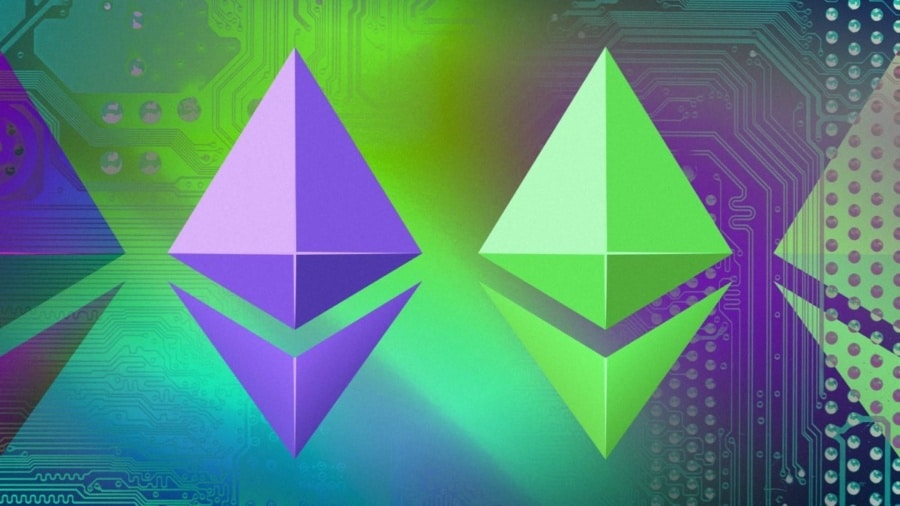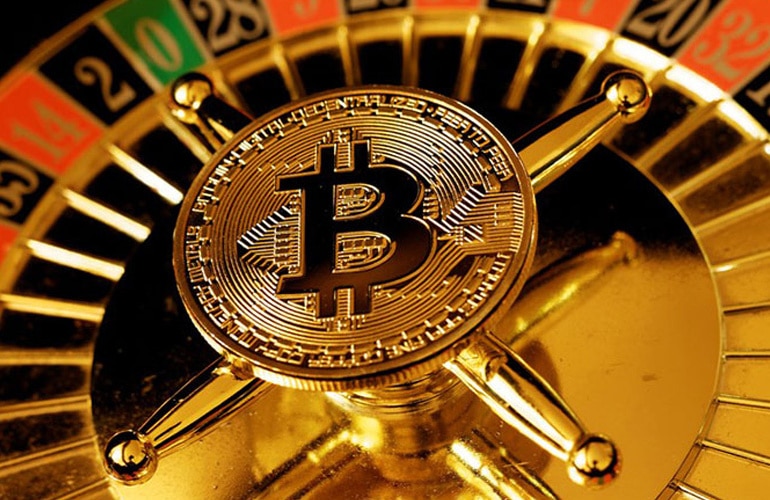It appears that the nascent digital currency industry is facing a significant game changer as Ethereum’s blockchain undergoes a major upgrade, dubbed “the Merge.”
The Merge, which went live on Thursday, is expected to significantly lessen the environmental effect of cryptocurrency mining and increase its usefulness more generally as a means of conducting financial transactions, among other applications, according to cryptocurrency enthusiasts.
But what precisely is the Merge, and how can it affect the development of cryptocurrency?
What Is Ethereum Merge?
The Merge was the union of Ethereum’s new proof-of-stake consensus layer, the Beacon Chain, with its original execution layer, the Mainnet, which has been around since the platform’s inception. It made it unnecessary to use energy-intensive mining and allowed the network to be protected using staked ETH instead. As a result, more scalability, security, and sustainability made it a fascinating step in bringing the Ethereum goal to life.
What Does the Name “Merge” Mean?
As of 2020, the Beacon Chain, a Proof-of-Stake network for Ethereum, hasn’t yet processed transactions. So, it is a staging area for machines running the Ethereum network that is getting ready for the PoS update.
To switch to PoS entirely, Ethereum must integrate the Beacon Chain (known as the “Consensus” layer) with the Ethereum mainnet (known as the “Execution” layer).
How Do Proof-Of-Stake (POS) And Proof-Of-Work (POW) Differ?
To determine who is allowed to log the following “block” of network transactions, proof-of-stake (PoS) and proof-of-work (PoW) use different methods.
Ethereum uses a proof-of-work (PoW) system similar to Bitcoin, where miners crack cryptographic puzzles to publish blocks.
Validators who stake (lock up) at least 32 ether (about $50,000) will be chosen randomly to construct blocks in the upcoming PoS system. The more ether one stakes, the more likely they are to be chosen.
For block-winning miners and validators in both systems, transaction fees plus freshly created ether (ETH) are awarded. In addition, PoS validators are rewarded for taking extra measures to ensure the security of their networks.
Will Ethereum Fees Decrease After the Merger?
No. Ethereum transaction fees are not expected to be affected by the Merge. It is not likely that Ethereum’s high network fees will be addressed until at least 2023, when danksharding and proto-danksharding will be introduced.
For Ethereum’s transaction fee problems, third-party networks such as Arbitrum and Optimism, which bundle transactions and process them separately, remain the most viable solution.
Will the Merge Result in Faster Ethereum Transactions?
Almost, but not entirely. Ethereum blocks are generated on average every 13 to 14 seconds under the current proof-of-work (PoW) architecture. After the merge, a regular 12-second interval will be set to generate Proof-of-Stake (PoS) blocks. Unfortunately, it is unlikely that many Ethereum users will notice this improvement, and Ethereum continues to lag behind other blockchain networks such as Solana and Avalanche (though it remains well ahead of Bitcoin, which produces a new block every 10 minutes on average).
As with transaction fees, Ethereum’s third-party rollups are necessary for those seeking faster transaction times.
Is the Merge Going to Raise Eth Prices?
It’s difficult to say. It is impossible to forecast what will happen to the token price of Ethereum as a result of the Merge because there are so many unknowns and factors.
The Merge is being positioned by the Ethereum community as a significant enhancement to the network’s basic technology. In addition, PoS will address issues with the network’s environmental effect and bring staking as a new utility to the native ether (ETH) currency of Ethereum.
However, the price of ETH may not increase as a result of the Merge. Due to the Merge, changes to ether’s distribution and issuance rates will also be made. Depending on who you ask, these changes might be good or bad. A small risk exists that the Merge will not succeed or that PoS will turn out to be less secure than PoW.
Additionally, there is conjecture that the Merge has already been factored into market prices.
Is PoS Preferable to PoW?
Ethereum Foundation, a nonprofit group that sponsors Ethereum’s growth, estimates that PoS will reduce Ethereum’s energy consumption by 99.95%. According to PoS advocates, cryptocurrency miner ASICs concentrate power in the hands of those who can afford them. In addition, they contend that Proof of Stake allows users to control the network by “staking” cryptocurrency, which renders attacks both economically inviable and self-defeating.
According to PoW proponents, staked networks are subject to centralization and security risks, which make it easier for malicious actors to acquire direct control over the network. However, the report also notes that PoS is a less tried-and-true method than PoW, which is the basis of the two most extensive blockchain networks and has proven to be reliable.
When will the Merge take place?
It will take place on 15 September 2022. Miners add blocks to the Ethereum PoW network based on the difficulty number associated with each block. In contrast, to set date (TTD), the Merge is intended to go into effect once the “total terminal difficulty,” or the actual difficulty of all mined Ethereum blocks, reaches a certain quantity rather than on a specific date.
Ethereum’s core developers set the TTD at 58,750,000,000,000,000,000,000 in August, and it will be reached sometime between September 14 and 15. However, it is impossible to provide an exact estimate because block difficulty and issuance rate change over time.
Can I become an Ethereum staker or validator?
Yes, as long as you have ETH on hand. A stake of 32 ether can already be used to validate the Ethereum PoS Beacon Chain and get rewards. It is expected that six to twelve months after the Merge, Ethereum staked will earn network benefits. However, withdrawals will not be allowed until an update.
A centralized platform such as Coinbase (COIN) or Kraken can be used for people without much blockchain knowledge to stake. Users with less than 32 ETH can stake their coins with these services in exchange for a share of their earnings.
In addition to Lido and Rocket Pool, liquid staking pools are popular with individuals with fewer than 32 ETH. This is because ETH staked through these services trades at a lower price than standard ETH, which is called staked ETH tokens.
Staked Ether After the Merge: What Happens?
The Merge will release stalled ether about six to twelve months after the network locks it up. Then, as soon as their staked ether has generated profits, owners will be able to withdraw it.
Are There Anything Ethereum Users or Holders of Eth Need to Do After the Merge?
No. If you already have ether (ETH), you won’t have to claim fresh “PoS ETH” or “ETH2” tokens. You can continue using the network after the Merge, as your balance will remain the same.
After the Merge, Ethereum users will not have to do anything, but Ethereum software vendors and node operators (people who operate the Ethereum network’s machines) will need to update their software to ensure they are working with the most recent version.
What’s With All the Talk of “Forks” in POW?
Several Ethereum miners have expressed plans to fork or split the PoW chain because they are hesitant to abandon the network’s traditional consensus mechanism. After the Merge, these miners will copy the main Ethereum blockchain, complete with balances, and continue to run their own PoW copies.
If you owned ETH before the Merge, you’d receive a balance of tokens at the time of these new PoW forks. Depending on the chain, there will be a different procedure to claim these tokens. For example, if you own ETH on Coinbase, you won’t be able to claim your part since centralized exchanges don’t offer forked tokens.
Some ether tokens that branched off after the Merge might be valuable, but Ethereum community leaders warn that PoW forks are merely covert cash grabs.
Ethereum Proof-of-Work Forks: A Gift or a Swindle?
There is a possibility that the merge will fail. There is a possibility, but it is unlikely. It is the first time a proof-of-stake system will be adopted in place of a proof-of-work system. The Merge will be a noteworthy accomplishment in engineering and collaboration among people if it is successful. Ether has a market cap of close to $200 billion, and many valuable tokens are built on it, so if it fails, it could wipe out hundreds of billions of dollars in value.
Several fruitful tests and Merge simulations have already been performed by The Merge’s leading developers and other stakeholders. Of course, there is still a possibility that the Merge will fail, but this is highly unlikely.
What Ethereum plans to do following the Merge?
Developers on Ethereum’s core network will continue working on the open-source network as before after the Merge, with plans to increase speed, security, and network costs.
Developers are expected to pay close attention to shading, which aims to increase Ethereum’s transaction throughput and reduce its fees by distributing network activity across numerous “shards” (similar to lanes on a motorway). As a result of third-party roll-ups addressing some of the same issues, these updates were initially planned to go along with the Merge, or Ethereum 2.0.
The roadmap also includes the Proposer Builder Separation (PBS), which separates transaction creators from transaction proposers. PBS addresses Ethereum’s maximal extractable value (MEV) issue.
What Happens to Miners Who Use Proof-Of-Work After the Merge?
Most Ethereum miners will not be able to produce new blocks after the Merge since their expensive computers are designed just for mining. As a result, many miners will stop mining on the PoS network and instead stake ether instead of receiving rewards.
If you want to continue mining, you’ll have to switch to an Ethereum Classic network, which is another proof-of-work network.
Some miners intend to produce a “forked” proof-of-work blockchain following the Ethereum Merge. A forked blockchain uses the previous miner-friendly protocol while operating on the Ethereum blockchain. Mining on these chains may or may not pay off for miners in the future.
Conclusion
With ETH 2.0, Ethereum will receive many much-needed improvements and solidify its position as the largest smart contract platform in the world. Given the current market conditions, purchasing isn’t the best option. A dollar-cost-averaging strategy could be used to purchase ETH for six to twelve months after the update.
By upgrading ETH, the price may reach new all-time highs in the 2024 Bull Run, which is predicted to occur after the halving of Bitcoin.
***





